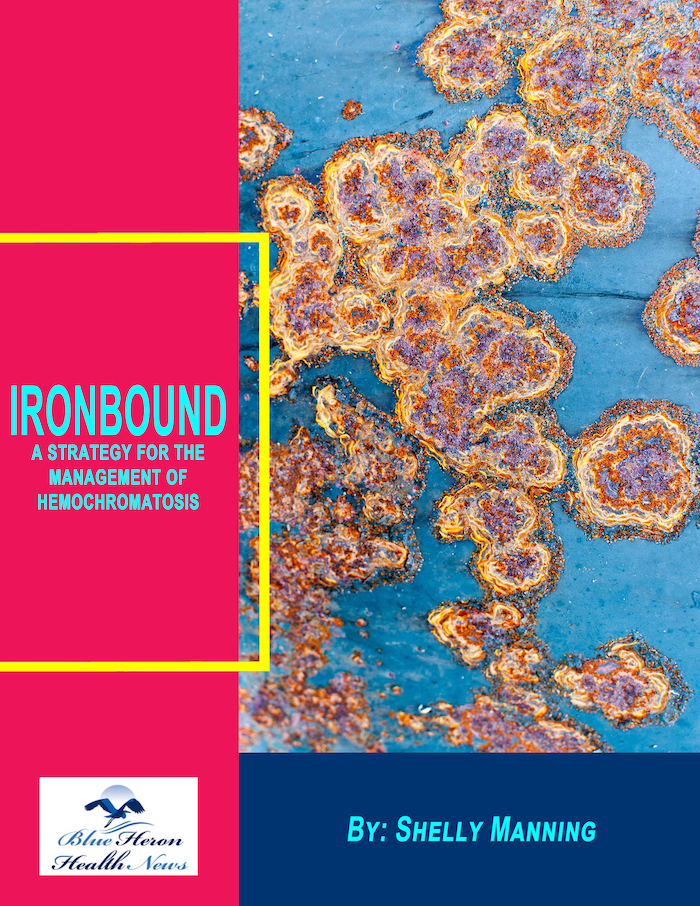
Ironbound™ A Strategy For The Management Of Hemochromatosis By Shelly Manning The 5 superfoods explained by Shelly Manning in this eBook play an important role in reducing the levels of HCT. The absorption of the excessive amount of iron by the genes of HCT can be blocked by these superfoods. In this way, the information provided in this eBook can help in resolving the problem of excess iron in your body naturally without any risk of side effects.
What are the risk factors for developing hemochromatosis?
Risk Factors for Developing Hemochromatosis
Hemochromatosis is a condition characterized by excessive iron accumulation in the body, leading to organ damage. It can be inherited (hereditary hemochromatosis) or acquired (secondary hemochromatosis). Understanding the risk factors for developing hemochromatosis is crucial for early diagnosis and management. Here is a detailed overview of the risk factors associated with hemochromatosis:
1. Genetic Factors
A. HFE Gene Mutations
- C282Y Mutation: The most significant risk factor for hereditary hemochromatosis is being homozygous for the C282Y mutation in the HFE gene. Individuals with two copies of this mutation are at high risk of developing the condition.
- H63D Mutation: Having one copy of the H63D mutation, particularly in combination with a C282Y mutation (compound heterozygosity), can also increase the risk of hemochromatosis, although the risk is lower compared to C282Y homozygosity.
- S65C Mutation: This mutation is less common and typically associated with a milder form of iron overload. The risk increases when combined with other HFE mutations.
B. Non-HFE Gene Mutations
- HJV (Hemojuvelin) Gene: Mutations in the HJV gene cause juvenile hemochromatosis, a severe form of the disease presenting in childhood or early adulthood.
- HAMP (Hepcidin) Gene: Mutations in the HAMP gene also lead to juvenile hemochromatosis by impairing hepcidin production.
- TFR2 (Transferrin Receptor 2) Gene: Mutations in the TFR2 gene cause a form of adult-onset hemochromatosis.
- SLC40A1 (Ferroportin) Gene: Mutations in the SLC40A1 gene cause ferroportin disease or type 4 hemochromatosis.
2. Family History
- Inherited Condition: Hemochromatosis is often inherited, so having a family history of the condition significantly increases the risk. First-degree relatives (parents, siblings, children) of individuals with hereditary hemochromatosis should consider genetic testing and regular monitoring for early detection.
3. Ethnicity
- Northern European Descent: Hereditary hemochromatosis is more common among individuals of Northern European descent, particularly those of Celtic origin. The prevalence of the C282Y mutation is higher in these populations.
4. Gender
- Male Gender: Men are at higher risk of developing clinical symptoms of hemochromatosis at a younger age compared to women. This is because women lose iron through menstruation and pregnancy, which provides a protective effect against iron overload.
5. Age
- Age Factor: Symptoms of hereditary hemochromatosis typically appear in middle age, between 30 and 50 years for men and after menopause for women. The risk increases with age as iron accumulates over time.
6. Lifestyle Factors
A. Alcohol Consumption
- Impact: Excessive alcohol intake can exacerbate liver damage in individuals with hemochromatosis. Alcohol consumption increases iron absorption and can lead to liver disease, accelerating the progression of hemochromatosis.
B. Diet
- High Iron Intake: Diets high in iron, particularly heme iron from red meat, can increase the risk of iron overload in individuals with genetic predisposition.
- Vitamin C: High doses of vitamin C can enhance iron absorption, potentially worsening iron overload in susceptible individuals.
C. Blood Transfusions
- Chronic Transfusions: Individuals who require frequent blood transfusions, such as those with certain anemias or other chronic conditions, are at risk of secondary hemochromatosis due to the cumulative iron load from transfused blood.
7. Coexisting Conditions
A. Chronic Liver Disease
- Conditions: Liver diseases such as hepatitis C, alcoholic liver disease, and nonalcoholic fatty liver disease (NAFLD) can increase the risk of developing secondary hemochromatosis due to impaired iron metabolism and storage.
B. Other Genetic Disorders
- Examples: Conditions like thalassemia major or sideroblastic anemia, which require regular blood transfusions, increase the risk of secondary iron overload.
8. Environmental Factors
- Iron Supplements: Excessive use of iron supplements without medical supervision can lead to iron overload, particularly in individuals with a genetic predisposition.
- Occupational Exposure: Although rare, certain occupations with exposure to iron dust or fumes can contribute to increased iron levels in the body.
Conclusion
The risk factors for developing hemochromatosis include genetic mutations (primarily in the HFE gene), family history, ethnicity, gender, age, lifestyle factors, coexisting conditions, and environmental exposures. Understanding these risk factors is essential for early identification, monitoring, and management of hemochromatosis to prevent complications associated with iron overload. Genetic testing and regular monitoring are recommended for individuals at high risk, especially those with a family history of the condition or known genetic mutations.
Ironbound™ A Strategy For The Management Of Hemochromatosis By Shelly Manning The 5 superfoods explained by Shelly Manning in this eBook play an important role in reducing the levels of HCT. The absorption of the excessive amount of iron by the genes of HCT can be blocked by these superfoods. In this way, the information provided in this eBook can help in resolving the problem of excess iron in your body naturally without any risk of side effects.
